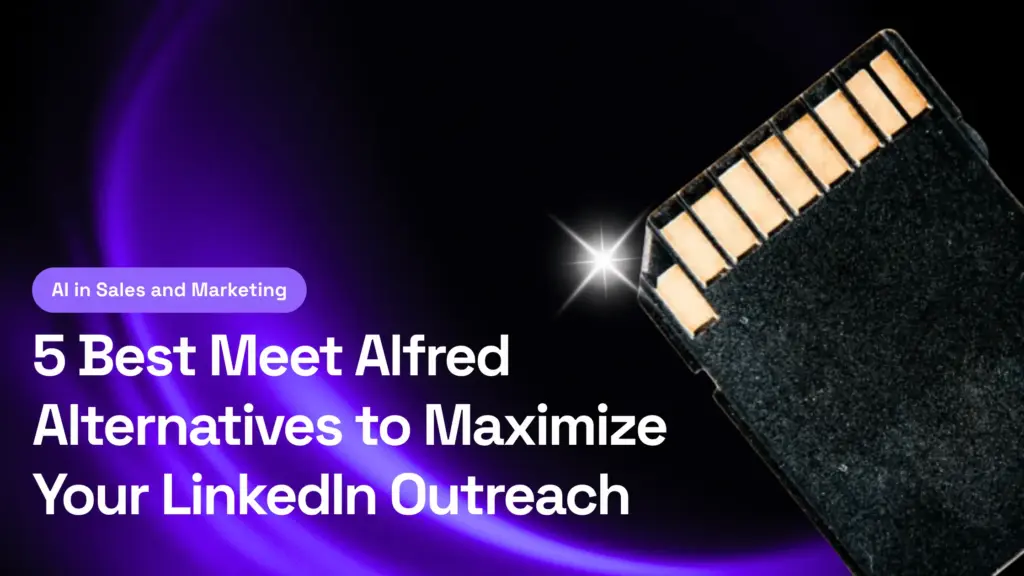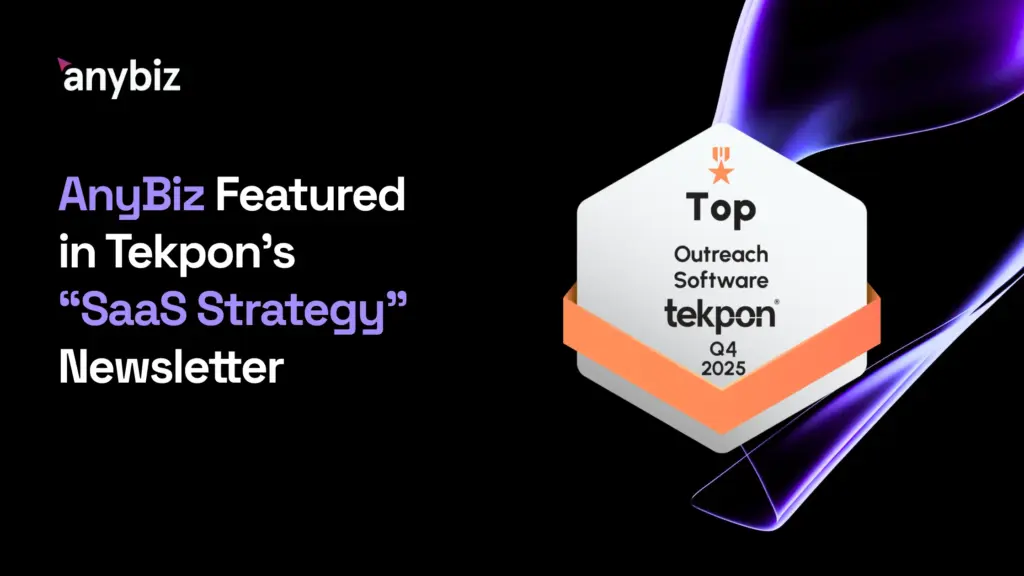Can you imagine getting around a busy city without a map? It’s feasible, but there’s a good possibility you’ll pass over the most fascinating locations and quickest routes. In a similar vein, attempting to navigate the complicated world of B2B marketing without lead scoring is akin to going on a blind date. By identifying the prospects who have the highest likelihood of becoming customers, lead scoring assists firms in concentrating their marketing and sales efforts.
The technique of giving each lead you produce a value depending on how likely it is that they will interact with your business is known as lead scoring. Teams can target their outreach to leads who are most likely to convert by using these metrics to help rank leads. Why is this relevant? Recent data shows that businesses with established lead scoring procedures get a 77% increase in lead production return on investment over those without.
Lead scoring used to be a manual, sometimes arbitrary process that relied more on intuition than objective facts. However, lead scoring has changed significantly in the modern era with the development of artificial intelligence (AI). Large amounts of data, including demographics, historical interactions, and behavior, can be analyzed by AI systems to automatically and properly assess leads. This expedites the procedure while also revealing subtle information about potential customers that human analysis would overlook.
Let’s examine how this technology is transforming how companies rank their leads and why setting up an advanced lead scoring system can be the key to your company’s success.
Understanding Lead Scoring
Sales and marketing teams use lead scoring—a technique—to evaluate prospects against a scale that reflects the supposed value each lead brings for the company. Businesses can estimate the probability of a lead becoming a client by giving numerical values to each lead depending on many parameters including their professional information, behavior on your website, email engagement, and social media contacts.
Lead scoring was first a rather arbitrary habit, usually based on the instincts of sales teams who would evaluate a lead’s potential depending on personal experience and anecdotal data. Lead scoring changed over time to become a more methodically data-driven strategy as digital technologies and CRM systems were essential to marketing plans. Recent years’ integration of artificial intelligence and machine learning has revolutionized lead scoring into a dynamic and automated process able to analyze intricate patterns of user activity to more precisely forecast results.
Benefits of Effective Lead Scoring
Improved Sales Efficiency and Effectiveness
Lead scoring helps sales teams to focus on the most likely leads, therefore optimizing their time and raising their chances of successful results. Emphasizing high-priority leads helps sales initiatives to be more focused and effective.
Enhanced Alignment Between Marketing and Sales Teams
Lead scoring provides a common structure that fits sales goals and marketing ones. While sales offers comments that helps improve score models and lead generating initiatives, marketing can spot and give off well-qualified prospects to sales.
Faster Closure Rates
Emphasizing high-potential leads reduces the sales cycle since these leads usually coincide with the decision to buy. This simplified strategy not only increases sales activity but also raises the possibility of faster contract closing.
Who Should Implement Lead Scoring

Ideal Profiles for Lead Scoring Implementation
- Companies who produce a lot of leads have more need to give their sales efforts top priority.
- Businesses in sectors include technology, B2B services, and sophisticated manufacturing gain greatly from lead scoring since it helps nurture leads over a long buying process.
- Companies that market to multiple sectors or user roles find lead scoring helpful to match their marketing strategy depending on different target segments.
- Lead scoring enables companies seeking to maximize marketing efforts by concentrating resources on leads most likely to convert.
Case Studies
- Tech Solutions Inc.. Using lead scoring to better classify their prospects depending on possible transaction size and propensity to close, this SaaS provider increased sales productivity by thirty percent.
- HealthEquip Distributors prioritized high-value opportunities by customizing their lead scoring methodology to account for hospital size and budget cycle, therefore increasing the conversion rates by twenty percent.
- EduTech Startup. Using lead scoring to set educational institutions apart depending on their technology adoption rates, an educational technology startup improved targeted marketing and increased engagement by 25%.
Parameters for Lead Scoring

Types of Scoring Parameters
Lead scoring models are constructed on a range of criteria falling into many main groups. These criteria let companies assess leads depending on their chances to become paying consumers:
Demographic Information
This includes details such as industry, company size, job title, and geographic location. These factors are essential to determine if a lead fits the ideal customer profile (ICP).
Online Behavior and Engagement
Visiting important web pages, downloading materials, and spending time on a site reveal information on the degree of interest of a lead. Regular contacts with particular product pages and the corporate website can point to a strong degree of interest.
Email Interaction
Important markers of participation are responses to email marketing including open rates and click-through rates. Sales effort may be more welcome from leads who routinely receive emails and click on material.
Assigning Values to Different Parameters
The effectiveness of a lead scoring model largely depends on how well the values assigned to different parameters align with actual customer behavior and conversion patterns. Here’s how businesses can set up a weighted scoring system:
Basic Weighting. Assign points to different activities and demographic factors based on their perceived importance. For example, a lead from a target industry might score higher than one from a non-target industry.
Tiered Scoring. Implement tiered points for activities based on their engagement level. For instance, downloading a whitepaper might earn more points than viewing a blog post because it suggests a deeper level of interest.
Decay Over Time. Reduce the score for older activities to prioritize recent engagement. This reflects the diminishing interest of a lead over time if no recent interaction is recorded.
Thresholds for Engagement Levels. Establish thresholds that categorically move leads from one qualification stage to another, such as from marketing-qualified to sales-qualified, based on their score.
Read also – Best 15 Outbound Lead Generation & Marketing Agencies in 2024
Stages of Lead Qualification
- Leads known as Marketing Qualified Leads (MQLs) exhibit enough interest or involvement to be more likely than usual to turn into a customer. Usually found by their involvement with marketing material—such as whitepapers, webinar attendance, or regular visits to the product pages—MQLs are recognized.
- Sales qualified leads (SQLs) are further checked by the sales team for their possibility to close into consumers after passing the basic marketing criterion. More often than not, SQLs show deeper involvement—that is, asking for a demo, completing a contact form, or outright enquiring about goods or services.
Example of a Weighted Lead Scoring System
1. Basic Weighting
Demographic Information:
- Industry: +20 points for leads from the technology sector, +10 points for healthcare, and +5 for education.
- Job Title: +15 points for decision-makers (e.g., CTO, CEO), +10 for influencers (e.g., Managers, Directors).
- Geographic Location: +10 points for leads from North America, +5 for Europe (key markets).
Online Behavior and Engagement:
- Visited pricing page: +20 points.
- Downloaded a product datasheet: +15 points.
- Attended a webinar: +10 points.
- Regular blog visitor: +5 points per visit.
2. Tiered Scoring
- Email Interaction:
- Opened an email: +2 points.
- Clicked a link in an email: +5 points.
- Downloaded content from an email link (e.g., whitepaper, case study): +10 points.
3. Decay Over Time
- Points from email interactions decrease by 50% after 30 days to emphasize recent engagement.
- Points from webinar attendance decay by 10 points after 90 days, reflecting the fading interest if no further engagement occurs.
4. Thresholds for Engagement Levels
- Lead Qualification Stages:
- Marketing-Qualified Lead (MQL): A lead scoring 50 points is considered MQL, indicating initial marketing efforts have succeeded, and the lead shows potential interest.
- Sales-Qualified Lead (SQL): A lead scoring 100 points or more is categorized as SQL, ready for direct sales engagement, indicating a high probability of conversion.
Building a Tailor-Made Process
Creating a customized lead scoring model involves understanding the unique characteristics of your audience and business operations. Here’s how to design a process that reflects your specific needs and maximizes efficiency:
Steps to Customize Your Lead Scoring Model
Analyzing Your Audience and Sales Cycle:
- Identify Key Customer Segments. Start by analyzing your customer base to identify common characteristics and behaviors. This might include demographic details, industry type, company size, and typical pain points.
- Understand the Sales Cycle. Different products and services have varying sales cycles. It’s crucial to map out the typical journey your customers take from initial contact to purchase, noting key touchpoints that signify movement from one stage to another.
Integrating Feedback from Sales and Marketing Teams:
- Gather Insights from Sales. Regularly collect feedback from your sales team on the quality of leads. Which scores correlate with successful conversions? What patterns do they observe in leads that convert versus those that do not?
- Refine with Marketing Data. Use data from marketing campaigns to understand which interactions (like webinar attendance, ebook downloads, or free trial sign-ups) are most predictive of lead advancement. Adjust scoring based on this data to better reflect leads’ readiness to engage with sales.
Example Frameworks
Creating a Scoring Model for a B2B Software Company
For a B2B software company, creating an effective lead scoring model begins by defining conversion actions that strongly indicate buying intent. This includes requesting a product demo, signing up for a free trial, or spending time on high-value web pages like pricing or testimonials.
Next, scores are allocated to these high-intent behaviors, such as 20 points for a demo request, 15 points for a trial sign-up, and 10 points for visiting the pricing page. Based on historical data, thresholds are then set—50 points to classify a lead as a Marketing Qualified Lead (MQL) and 100 points for a Sales Qualified Lead (SQL).
A feedback loop is crucial, involving a monthly review where the sales team provides insights on the lead quality, allowing for adjustments to improve the scoring model’s accuracy.
Customizing for a Consumer Electronics Manufacturer
Similarly, for a consumer electronics manufacturer, the model starts by identifying key behaviors that signal interest, like visiting product comparison pages or viewing product videos.
Points are weighted according to the closeness to purchase, with general behaviors receiving lower scores, such as 5 points for viewing a video, and higher-intent actions like using a product comparison tool getting 15 points.
Point thresholds are established to reflect stages in the consumer journey, typically set at lower scores (30 for MQLs and 60 for SQLs) due to a shorter sales cycle.
Regular updates are vital, adjusting the scoring bi-annually based on sales outcomes and seasonal campaign data to maintain relevance and enhance effectiveness.
Leveraging AI for Lead Scoring with AnyBiz
As you can see, lead scoring is a complex and demanding task—why not let AI handle it for you? AnyBiz.io is not only an exceptional tool for lead scoring but also excels in overall lead generation. This platform leverages advanced AI capabilities to significantly enhance both the efficiency and effectiveness of these processes.
AnyBiz automates the intricate tasks of identifying and nurturing potential leads. It uses real-time data processing to continuously update lead scores, ensuring that every score reflects the most current interactions and behaviors. The AI system in AnyBiz dynamically adjusts its scoring models based on successful conversion strategies, learning from each interaction to refine its approach.
Moreover, AnyBiz isn’t limited to just scoring leads; it also automates the initial stages of lead generation. By analyzing a wide array of data from CRM systems, social media interactions, and website engagements, AnyBiz can identify promising leads early in their journey. It tracks lead behaviors like webpage visits, content downloads, and email responses, automatically adjusting lead scores and providing sales teams with up-to-date insights to prioritize their efforts effectively.
In simple terms, AnyBiz uses AI to take over the labor-intensive parts of lead management—from generating leads to scoring and nurturing them—allowing your team to focus on closing deals and building relationships with the most promising prospects.
AI Capabilities in AnyBiz

- Real-time Data Processing. AnyBiz processes and analyzes data in real time, ensuring that lead scores are always up-to-date with the latest interactions and behaviors.
- Dynamic Adjustments. The system continuously learns from interactions, allowing it to adjust scoring models dynamically based on what strategies lead to successful conversions.
- Multifaceted Data Analysis. By analyzing data from multiple sources, including CRM systems, social media interactions, and website engagements, AnyBiz provides a comprehensive view of each lead’s potential.
- Automated Behavioral Tracking. The platform tracks lead behaviors such as page visits, download histories, and email engagements, automatically updating scores based on predefined criteria.
Real-time Scoring and Dynamic Adjustments
AnyBiz’s AI evaluates each interaction in real time, adjusting lead scores immediately to reflect the latest data. This means that a lead’s score can evolve from one moment to the next, allowing sales teams to react quickly to hot leads or emerging opportunities.
Unexpected Benefits of AI in Lead Scoring
Uncovering Hidden Patterns and Predictive Insights:
- AnyBiz’s AI algorithms can identify subtle patterns in data that are often overlooked by human analysts. For example, it might find that leads who view specific types of content are more likely to convert, even if those content types aren’t the most popular overall.
- Predictive insights allow businesses to anticipate future behaviors, such as predicting which leads are likely to become SQLs based on early-stage interactions.
Expected Results and ROI
Measuring Success in Lead Scoring
Key Performance Indicators (KPIs) and Metrics to Watch:
- Lead Conversion Rate. The percentage of leads that convert into paying customers, indicating the precision of your scoring system.
- Sales Cycle Length. Monitoring changes in the duration of the sales cycle can reflect how well the lead scoring system prioritizes high-quality leads.
- Lead-to-Customer Ratio. This ratio helps determine the efficiency of lead handling and prioritization.
- ROI from Marketing Campaigns. Evaluates the effectiveness of various marketing initiatives in generating high-quality leads as assessed by the lead scoring system.
ROI Calculation
To understand the financial impact of implementing advanced lead scoring systems, consider the following framework:
Cost-Benefit Analysis:
- Costs Involved: Include the initial setup costs, any software or service subscriptions (like AnyBiz), and ongoing operational costs related to managing and maintaining the system.
- Benefits Gained: Increased revenue from higher conversion rates and more efficient sales processes. Also, consider intangible benefits like improved alignment between marketing and sales teams and enhanced customer engagement.
ROI Formula:
ROI= Net Benefit−Cost / Cost ×100
- Net Benefit: This is the total revenue attributed to leads scored and converted minus the costs of the lead scoring system.
Break-Even Point Analysis:
- Determine how long it takes for the benefits of the lead scoring system to cover the initial and ongoing costs. This analysis helps businesses understand the timeline for seeing a return on their investment
Conclusion
Any company trying to maximize its sales and marketing plans has to have a well-crafted lead scoring system implemented. All of which help to produce a better bottom line, these are significant advantages of such a system: it improves sales efficiency, matches marketing and sales teams, and speeds the sales cycle.
Especially when combined with artificial intelligence, lead scoring helps companies to precisely identify the most interesting opportunities. It guarantees that sales initiatives are focused where they most likely will produce results, therefore optimizing the return on investment in marketing activities.
The requirement of advanced tools to manage and understand enormous volumes of data becomes more important as the digital terrain gets more complicated. Leading edge of this technology are AI-driven solutions like AnyBiz, which provide companies a potent tool to manage the complexity of lead scoring with minimum human involvement.
Think about including an artificial intelligence-driven platform like AnyBiz into your plan if you want to improve your lead management systems and generate higher sales outcomes. AnyBiz lets you concentrate on what really important – closing deals and expanding your company – by automating the labor-intensive aspects of lead scoring and nurturing.
Additionally, take advantage of the opportunity to experience the capabilities of AnyBiz firsthand with a free 7-day trial. See for yourself how it can transform your lead scoring and sales processes.
📜 Related articles:




